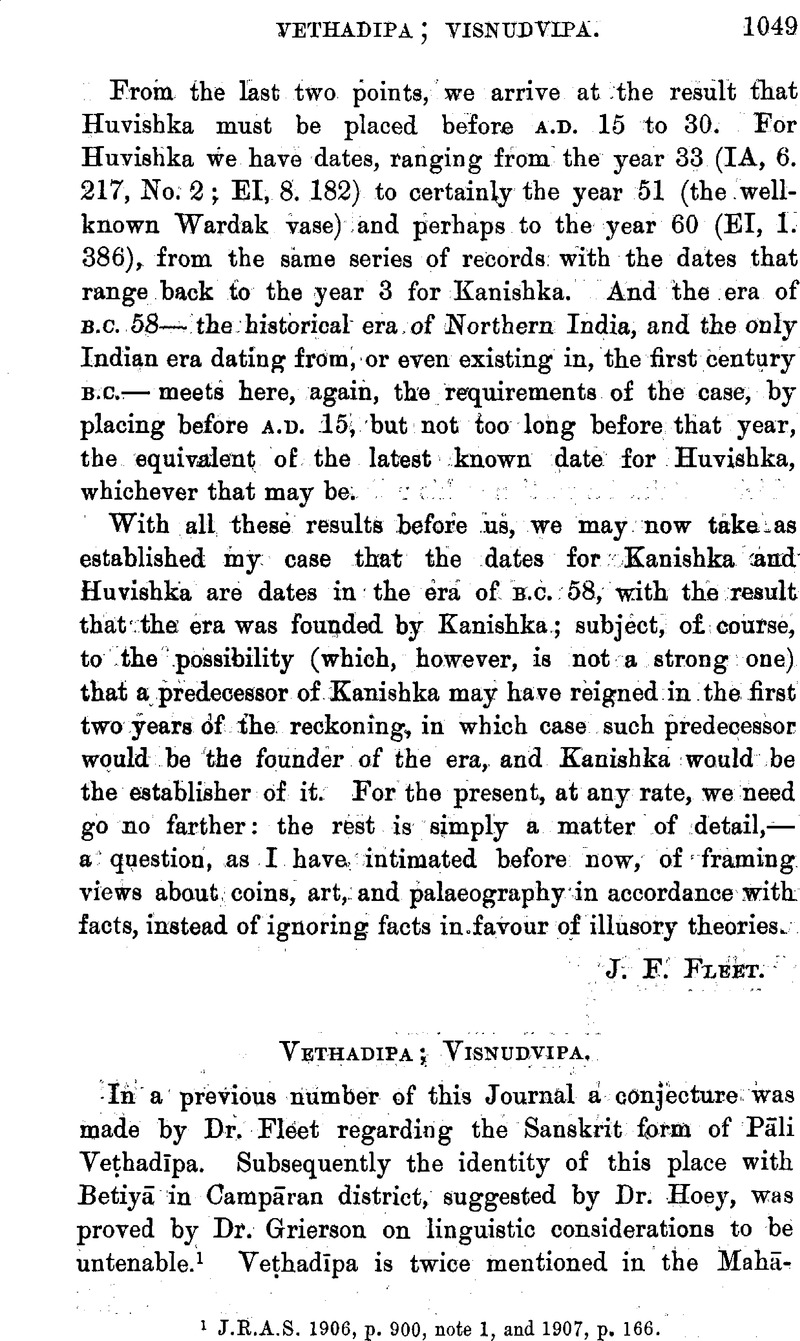No CrossRef data available.
Article contents
Abstract

- Type
- Miscellaneous Communications
- Information
- Copyright
- Copyright © The Royal Asiatic Society 1907
References
page 1049 note 1 J.R.A.S. 1906, p. 900, note 1, and 1907, p. 166.Google Scholar
page 1050 note 1 Mahāparinibbāna-sutta, in Dīgha-Nikāya, Pāli Text Society, vol. ii, pp. 165 and 167;Google Scholar cf. Book of the Great Decease, S.B.E., vol. xi, pp. 132 and 135,Google Scholar and Fleet, , J.R.A.S. 1906, p. 664.Google Scholar Veṭhadīpa, as pointed out by Dr. Fleet (ibid., p. 900), is also mentioned by Buddhaghoṣa.
page 1050 note 2 For a facsimile of this seal-die, somewhat reduced, see plate 3, at page 998 above, fig. 1: but the legend is much clearer on the original die, and there is no doubt about any of it.
page 1051 note 1 The same may be assumed with regard to other place-names such as Kusinārā and its Sanskrit equivalent Kuśanagara. Instances of such wrongly Sanskritized place-names nowadays adopted even by real paṇḍits are Lavapura (Lāhōr), Kuśapura (Kasūr), Paraśurāmapura (Peshāwar), etc.
page 1052 note 1 A.R., vol. xx, p. 315 (cf. p. 91);Google ScholarWilson, , Works, vol. ii, p. 344;Google ScholarRockhill, , “Life of the Buddha,” p. 145, has the mixed form Veṭhadvīpa.Google Scholar


